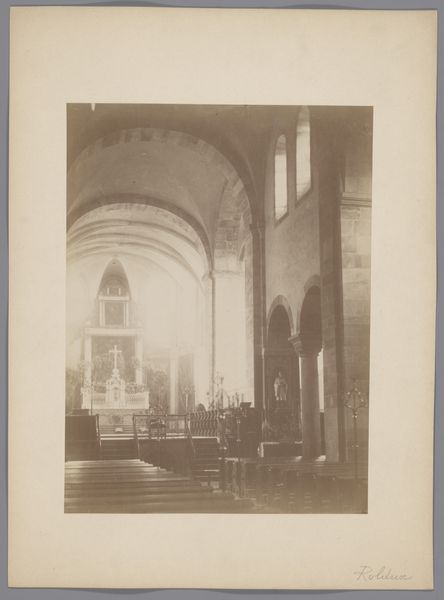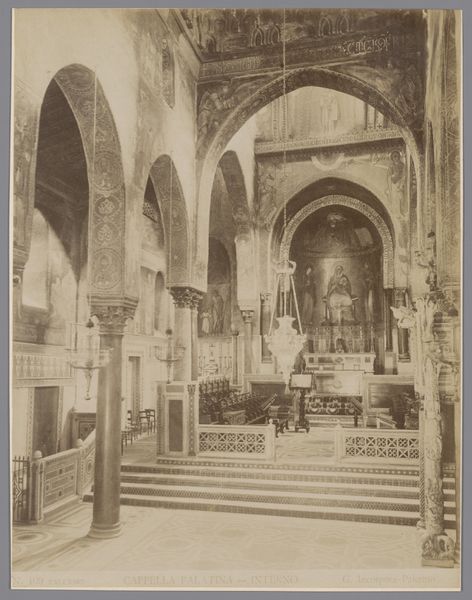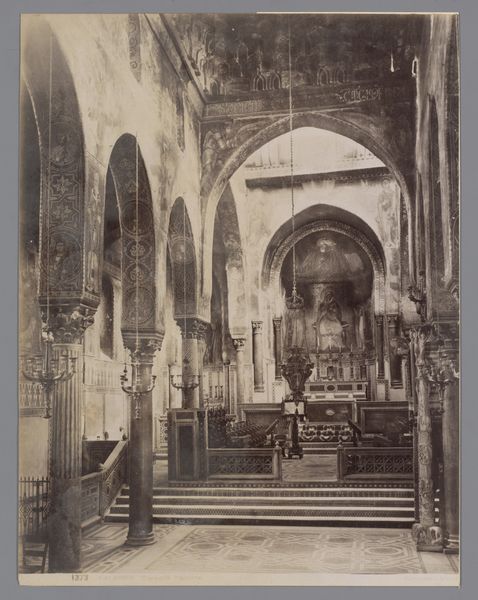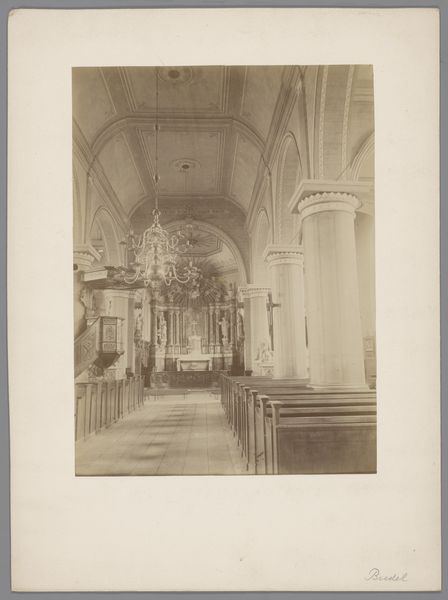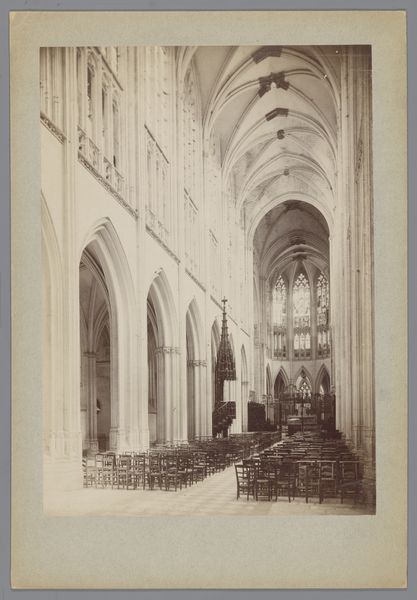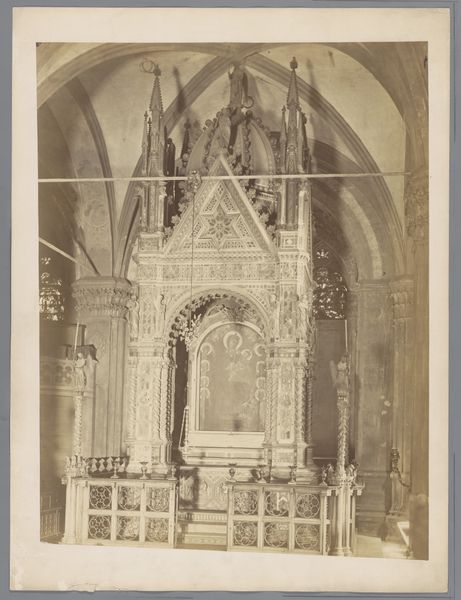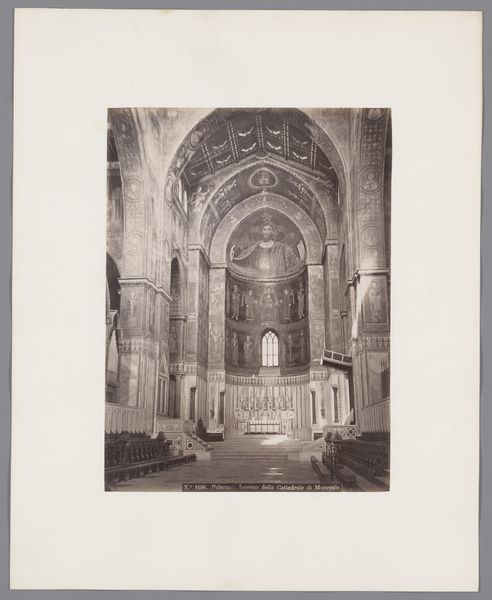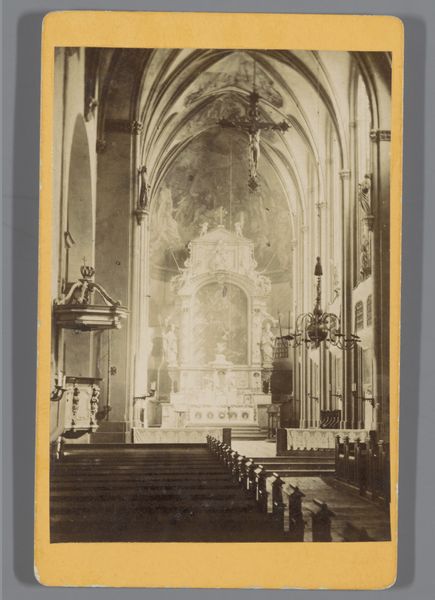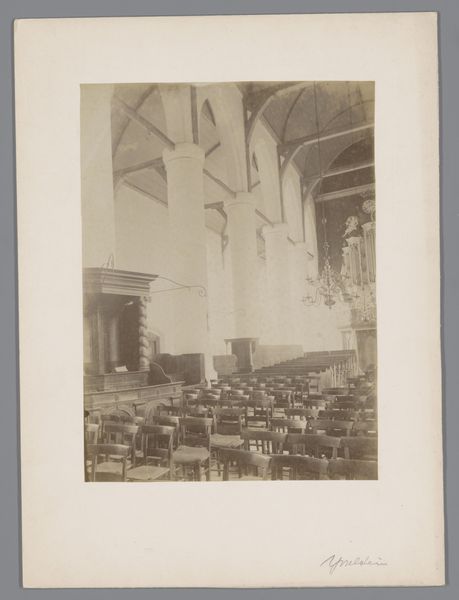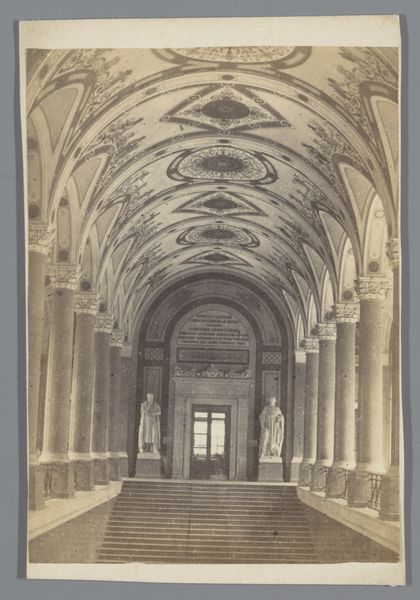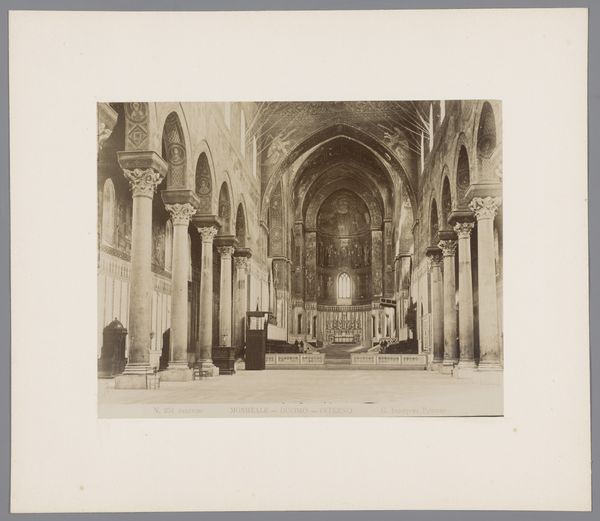
print, photography, gelatin-silver-print
# print
#
landscape
#
historic architecture
#
photography
#
gelatin-silver-print
#
19th century
Dimensions: height 103 mm, width 67 mm
Copyright: Rijks Museum: Open Domain
Curator: This gelatin-silver print, taken sometime between 1860 and 1890, captures the interior of the Dom in Bamberg, Germany, as seen by S.P. Christmann. Editor: The sepia tones lend the space a dreamlike quality. It's serene, almost ethereal, but also strikingly symmetrical in its composition. The pews seem to draw you right in. Curator: Churches, historically, were not just spaces of worship; they served as community hubs, deeply embedded within the social fabric. This image, capturing a space meant to inspire reflection, exists within that context. How did its physical presence shape experiences, reinforcing communal identities, and possibly also hierarchies? Editor: Visually, the photograph highlights the repeated use of arches and lines which act as powerful religious symbols across cultures: rising up to represent ascension or converging to signify unity, all while being grounded by those benches meant for gathering. Curator: Thinking about its political dimension, in a time of nation-building and rising religious tensions, who were these 'communities', and how was their experience framed? And for whom, truly, were spaces like these intended, especially considering historical gender and class dynamics? Editor: Perhaps a desire to document the sacred at a moment when religious certainties may have begun to feel tenuous for some. Capturing the grandeur may have acted as a way of solidifying cultural memory or faith through physical records. Curator: Yes, but this record, now mediated through Christmann’s lens, is it democratizing access, or reinforcing power structures by aesthetically framing hallowed places through photography? Editor: It's difficult to look past the beauty—the dedication to capturing such detail within the frame leaves a strong sense of its atmosphere that transcends era, wouldn’t you say? Curator: The aesthetics can, inadvertently or deliberately, also uphold legacies. Visual access isn’t always equitable or harmless, yet photographs such as these contribute in invaluable ways to the way society remembers shared space. Editor: A space that through visual record has allowed many more eyes to consider such complexities in an entirely new light.
Comments
No comments
Be the first to comment and join the conversation on the ultimate creative platform.
